Imagine the familiar, friendly chime of your favorite airline announcing boarding, instantly calming your travel nerves. Or the encouraging, upbeat voice from a language app that makes learning feel less like a chore and more like a game. That is the power of a sonic identity—a strategic asset that, in an increasingly audio-driven world, is no longer a "nice-to-have" but a core component of your brand's very essence.
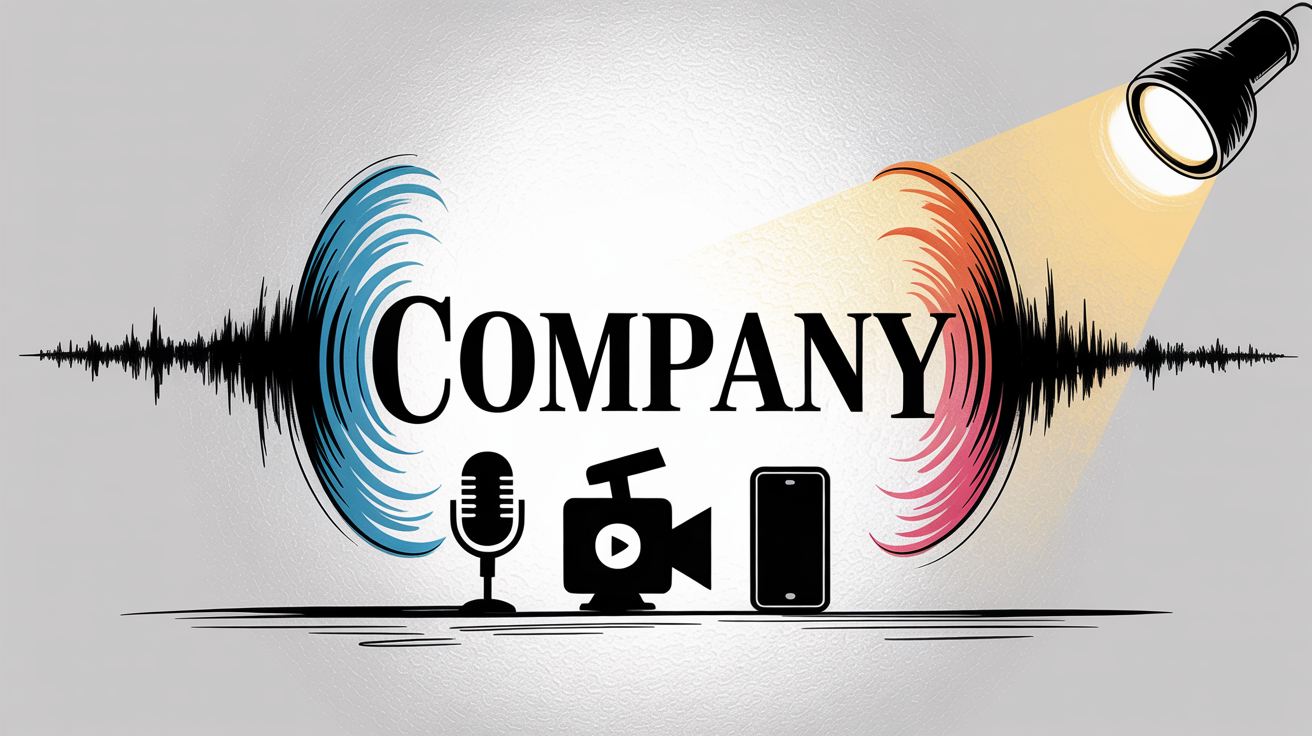
For decades, "brand voice" was a term reserved for marketing copy and visual style guides. But with the explosion of podcasts, smart speakers, video content, and automated customer interactions, the literal, audible voice of your company has become a critical touchpoint. It's how your customers don't just see your brand, but hear it, and more importantly, feel it.
This guide is an investigative dive into business voice cloning. We'll show how creating a consistent, scalable, and emotionally resonant digital voice is a strategic business decision. This is the playbook for transforming your brand’s voice from a series of one-off recordings into a persistent, invaluable digital asset.
The Evolution of Corporate Voice: From Robotic Prompts to Relatable Personalities
Not long ago, the sound of a "corporate voice" was the cold, robotic monotone of an early GPS or an automated phone system. Today, AI-powered voice technology can create hyper-realistic, emotionally nuanced voices that are virtually indistinguishable from a human speaker. This leap in technology has opened up a new frontier for branding.
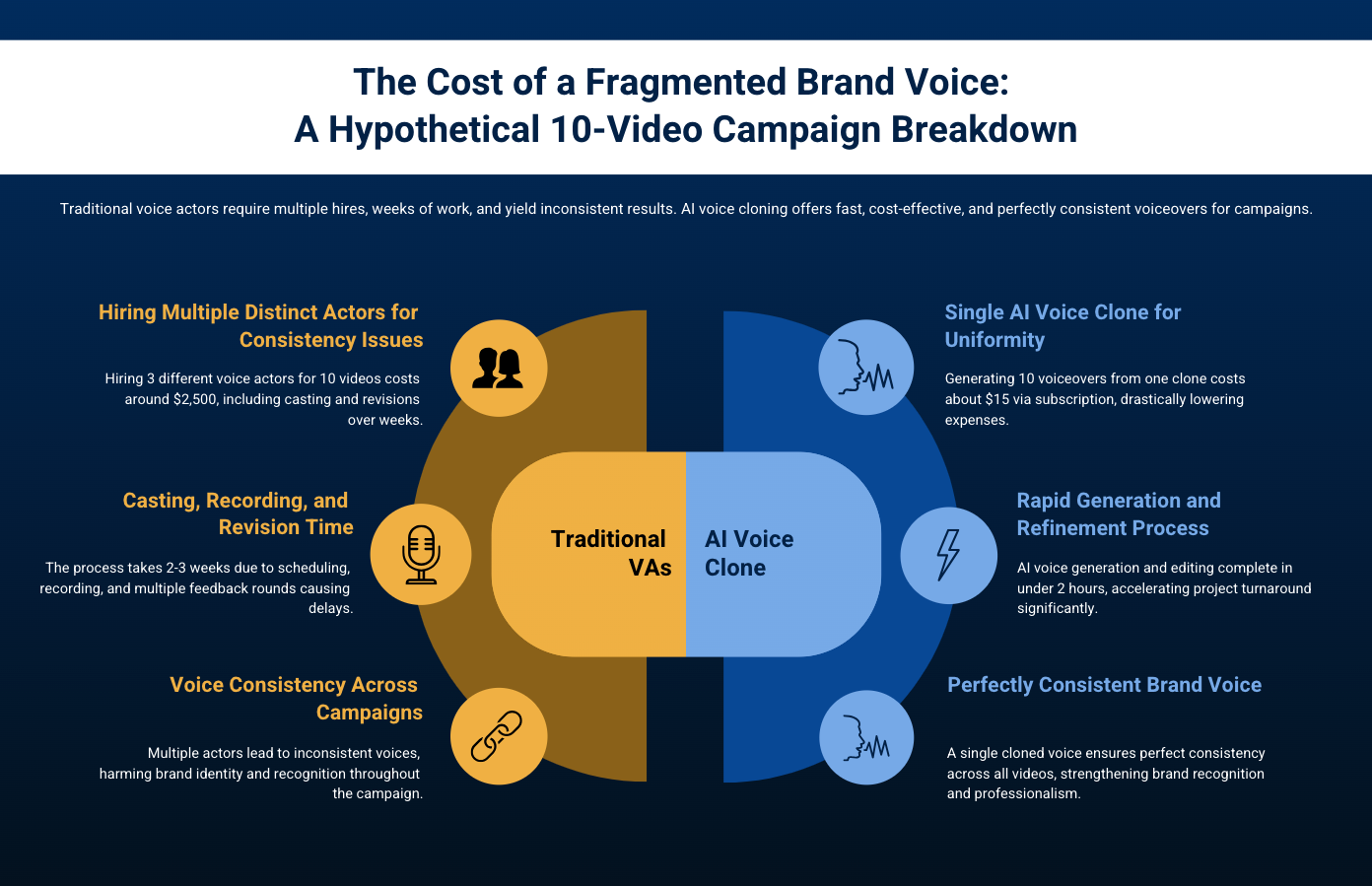
The traditional approach of hiring voice actors for every project—from marketing videos and internal training modules to IVR systems—is fraught with challenges:
- Inconsistency: Different actors for different projects lead to a fragmented brand personality.
- Scalability Issues: The need for endless recording sessions for new content is time-consuming and inefficient.
- High Costs: Professional voice talent represents a significant and recurring expense.
- Lack of Flexibility: Need to change a single sentence in a video? That often means a new recording session and additional costs.
AI voice cloning directly addresses these pain points by allowing a company to create a unique, ownable, and infinitely scalable "Signature Voice."
Deep Dive: The Strategic Pillars of a Cloned Brand Voice
1. Forging a Recognizable Sonic Identity
Just as a logo creates visual recognition, a consistent voice builds auditory recall. When customers hear the same voice across your website's welcome message, your social media videos, and your customer service line, it builds a powerful sense of familiarity and trust. Research has shown that sound is deeply linked to memory and emotion, meaning a well-defined sonic brand can create lasting, positive associations.
Industry Applications:
- Marketing: Imagine a single, recognizable voice narrating every promotional video, product tutorial, and audio ad, creating a cohesive brand story.
- Corporate Training: A consistent and familiar voice across all e-learning modules can make training more engaging and information easier to retain.
- Customer Experience: A warm, professional, and consistent voice in your IVR system can transform a potentially frustrating experience into a positive brand interaction.
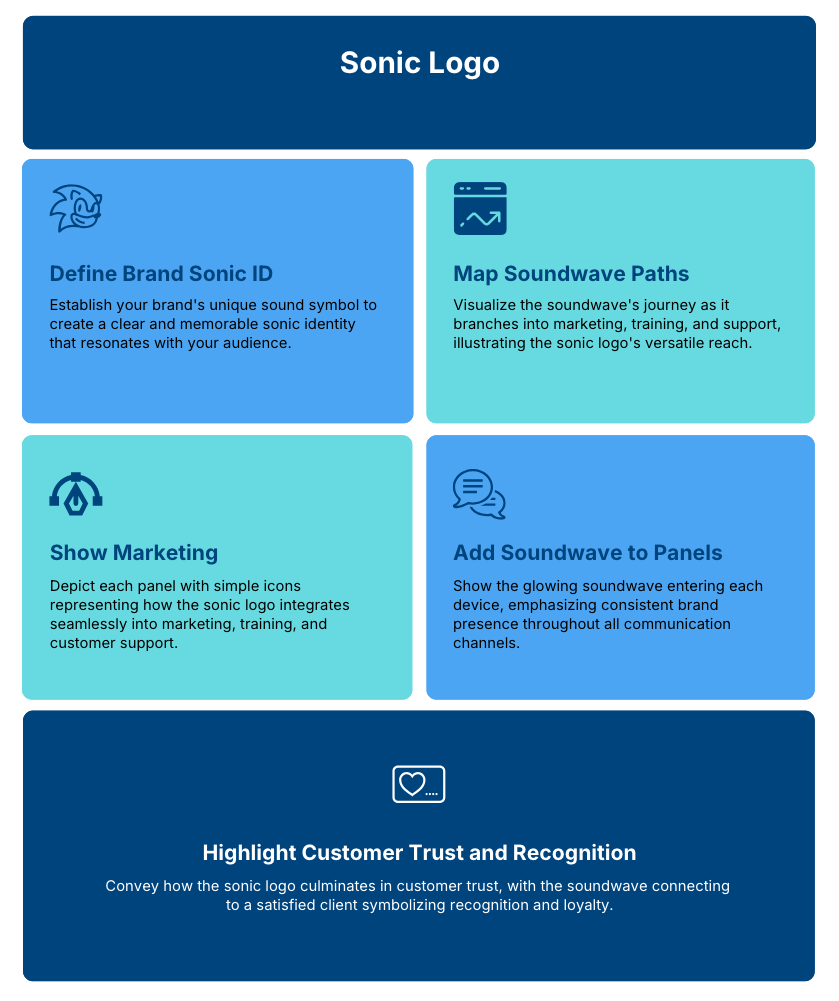
2. The Modern Alchemy: Cloning Your Brand's Voice
Creating a signature voice is no longer the exclusive domain of mega-corporations with massive budgets. AI platforms have democratized this technology. The process is surprisingly straightforward:
- Select Your Voice: Choose a person whose voice embodies your brand's desired personality traits—be it an executive, a brand ambassador, or a professionally hired voice actor.
- Record a Sample: High-quality input is key. Modern platforms like Kukarella have streamlined this, requiring as little as a 15-second clear audio sample to create a high-fidelity clone.
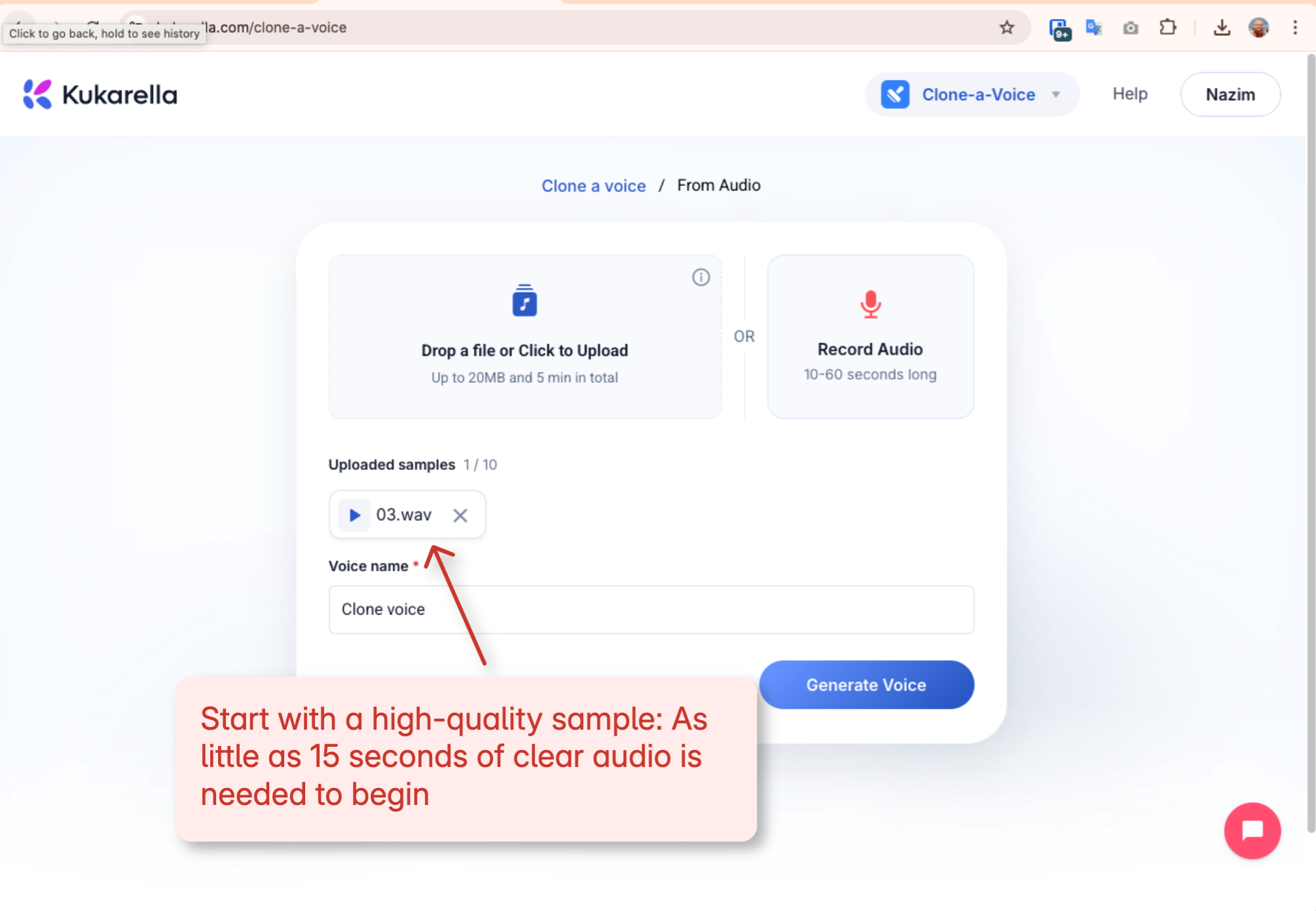
- AI Training and Generation: The platform's algorithms analyze the unique characteristics of the voice—the pitch, timbre, pace, and subtle inflections—to create a digital replica.
- Deployment: The cloned voice is now an asset, ready to be used to generate audio for any script, at any time.

This approach offers a cost-effective and efficient alternative to the logistical challenges of repeatedly hiring and recording human actors.
3. Beyond Monotone: Infusing Emotion and Versatility
A significant leap in modern voice cloning is the ability to move beyond a single, flat delivery. A brand's voice needs to adapt to different contexts—energetic for a marketing launch, calm and reassuring for a support tutorial, or serious for a corporate announcement.
This is where the true power of a platform like Kukarella becomes evident. Instead of being limited to one delivery style, users can create and save multiple emotional styles from a single cloned voice. By using simple text prompts like "energetic and upbeat" or "calm and serious," you can direct the AI to deliver the lines with the precise emotional tone required for the specific piece of content, ensuring your brand voice is not only consistent but also contextually appropriate.
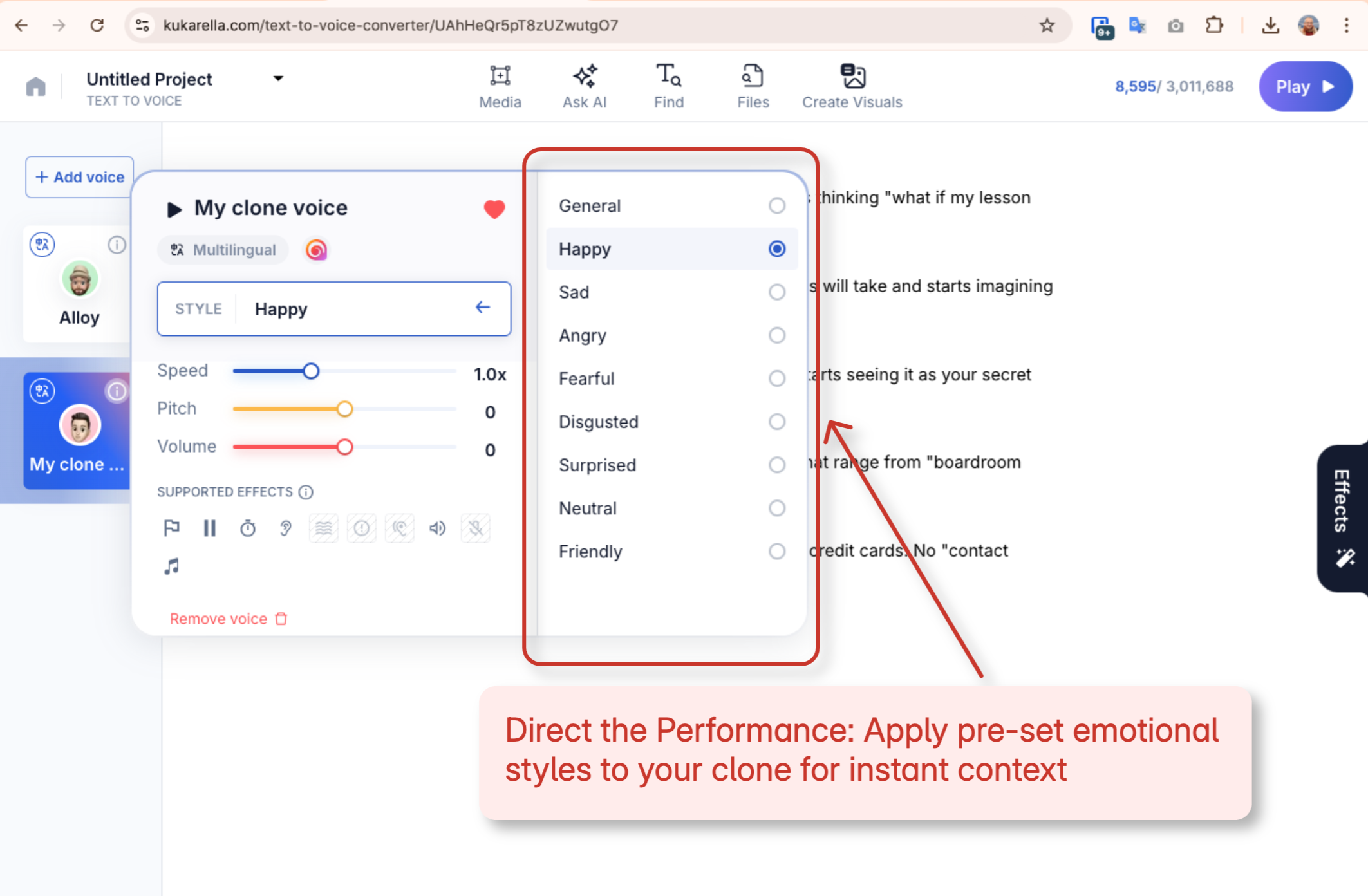
The Tool Ecosystem: Choosing Your Voice Cloning Partner
The market for AI voice generation is expanding rapidly. Here’s an honest look at some of the major players and their positioning:
| Feature | Kukarella | ElevenLabs | Murf | Play.ht |
| Cloning Simplicity | High (as little as 15-sec sample) | Moderate (requires more data) | Moderate | Moderate |
| Multilingual Capabilities | Yes (cloned voice can speak ~35 languages) | Yes | Varies | Yes |
| Emotional Styles | High (prompt-based custom styles) | Limited presets | Limited presets | Limited presets |
| Team Collaboration | Yes (voice sharing and management) | Basic | Yes | Yes |
| Data Privacy | High (user retains full ownership) | Past concerns over "perpetual rights" | Standard | Standard |
| Platform Scope | All-in-One (TTS, transcription, AI assistant) | Primarily TTS | TTS and collaboration | TTS-focused |
Decision Tree: Which Tool is Right for You?
If your priority is creating a highly versatile and emotionally nuanced brand voice with robust privacy protections and multilingual capabilities, all within a single content creation ecosystem, Kukarella is a leading contender.
If your sole focus is on high-fidelity text-to-speech generation as a standalone tool, ElevenLabs is a popular choice.
If you're a large organization primarily focused on collaborative voiceover projects, Murf's team features are a strong consideration.
Reality Check: Common Pitfalls and Troubleshooting
"My cloned voice sounds robotic."
- Myth: AI voices are inherently robotic.
- Reality: The quality of the output is directly tied to the quality of the input. A poor-quality recording made in a noisy environment will result in a subpar clone.
- Solution: Record your initial audio sample in a quiet space using a quality microphone.
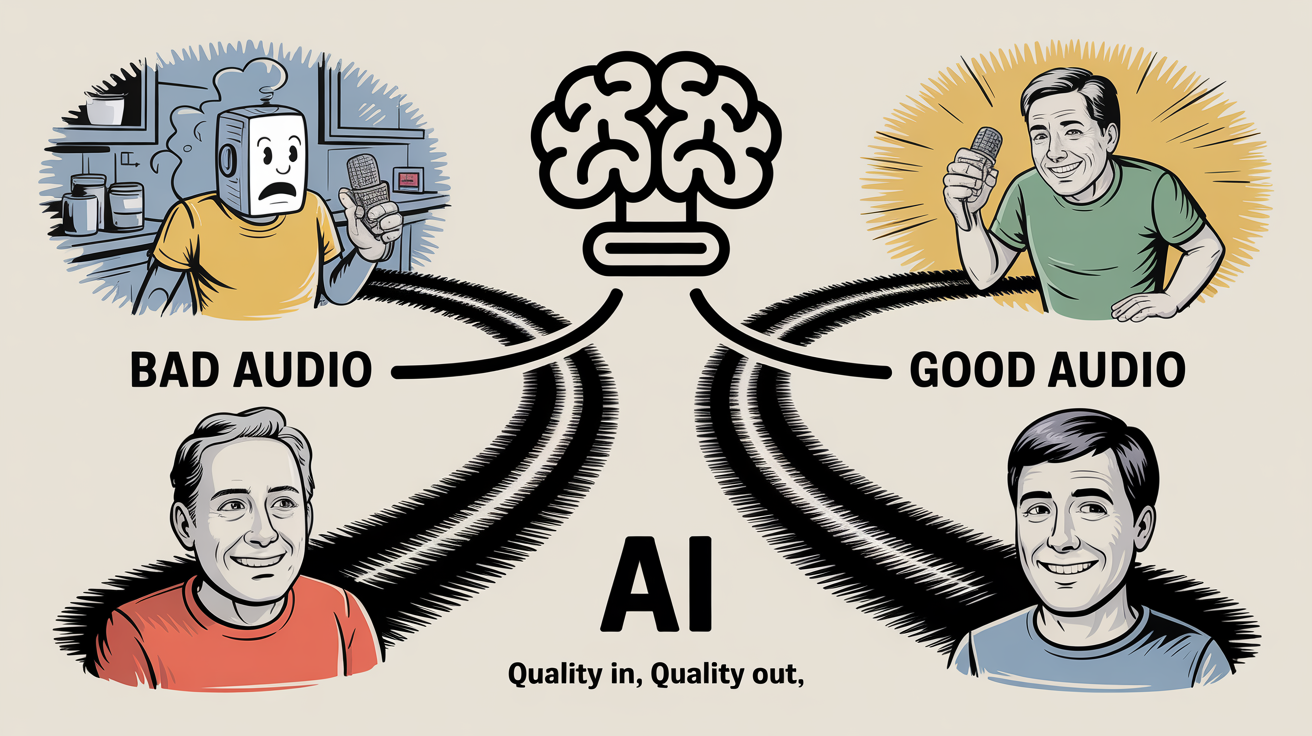
"Can we legally and ethically clone an employee's voice?"
The Fine Print:
This is a critical consideration. You must have explicit, written consent from the voice donor. The agreement should clearly outline how the voice will be used, for how long, and what compensation, if any, will be provided. Never clone a voice without full legal clearance.

Platforms like Kukarella emphasize a strong privacy stance, ensuring users retain full ownership and control of their biometric voice data, which is a key differentiator in the market.
The Future is Heard: What's Next for Business Voice Cloning?
The technology is not standing still. The future of corporate voice branding will be even more integrated and intelligent:
Real-Time Voice Cloning: Imagine personalized, real-time audio for live presentations, customer service interactions, and dynamic in-app guidance.
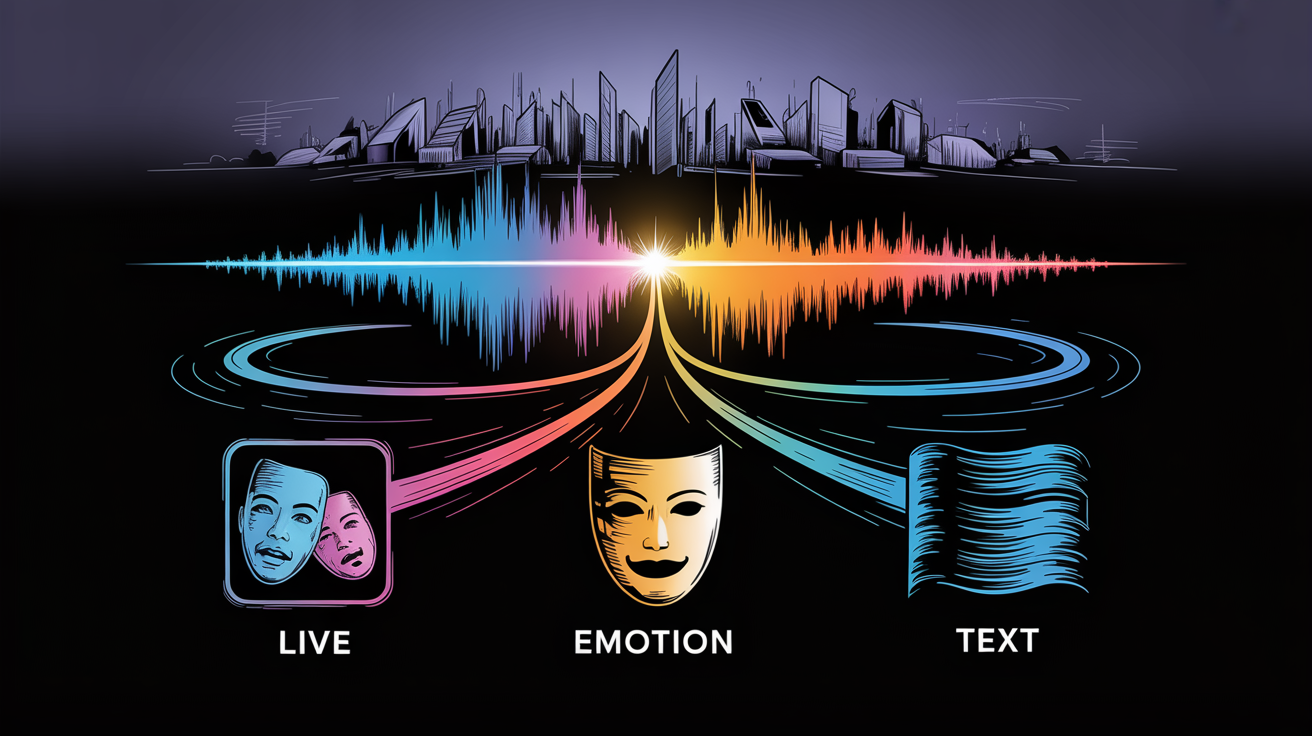
Advanced Emotional Nuance:
AI will become even more adept at interpreting the subtle emotional context of a script to deliver incredibly lifelike performances.
Voice Creation from Text:
A truly revolutionary concept available now on platforms like Kukarella is the ability to generate a completely new, unique AI voice from a simple text description (e.g., "a deep, trustworthy male voice with a slight British accent"). This bypasses the need for a human voice donor altogether, offering unparalleled flexibility.
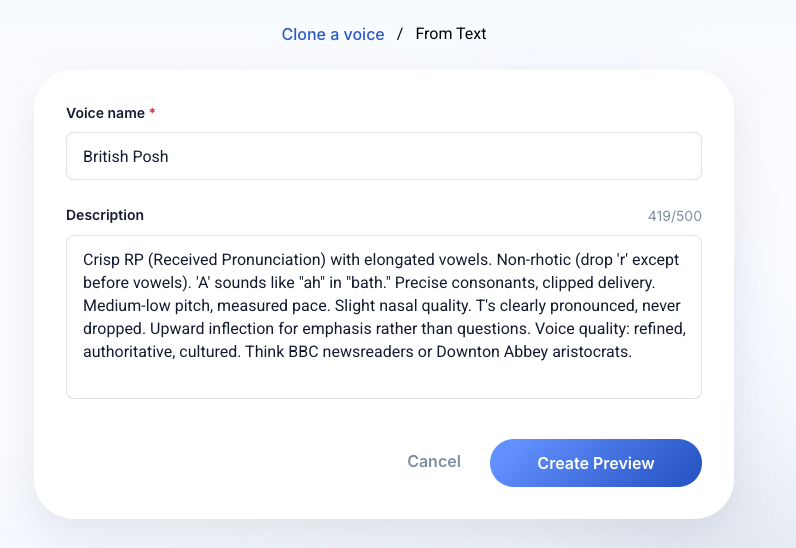
Your Action Plan: Creating Your Brand's Signature Voice
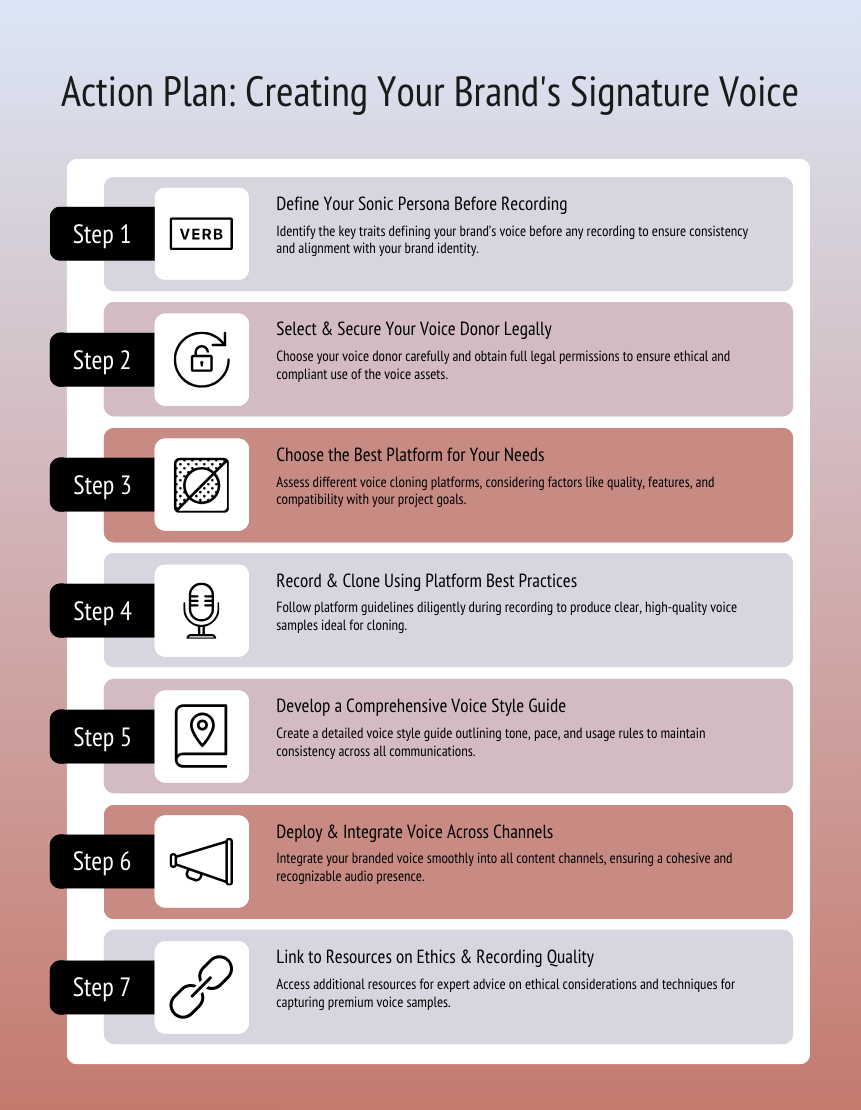
- Define Your Sonic Persona: Before any recording, determine the core attributes of your brand voice. Is it warm, authoritative, witty, or reassuring?
- Select & Secure Your Voice: Choose your voice donor and, most importantly, secure comprehensive legal consent.
- Choose Your Platform: Evaluate the options based on your needs for quality, flexibility, collaboration, and privacy.
- Record & Clone: Follow the platform's best practices to create the highest quality clone possible.
- Develop Your Style Guide: Just as you have a visual style guide, create one for your voice. Define the different emotional tones for various use cases. Kukarella's ability to save multiple styles from a single clone is invaluable here.
- Deploy & Integrate: Begin integrating your new voice asset across all your content channels for a truly consistent brand experience.
- Link to Further Resources: For a deeper dive into specific areas, explore guides on recording high-quality voice samples and understanding the ethics and legal rights surrounding voice cloning.